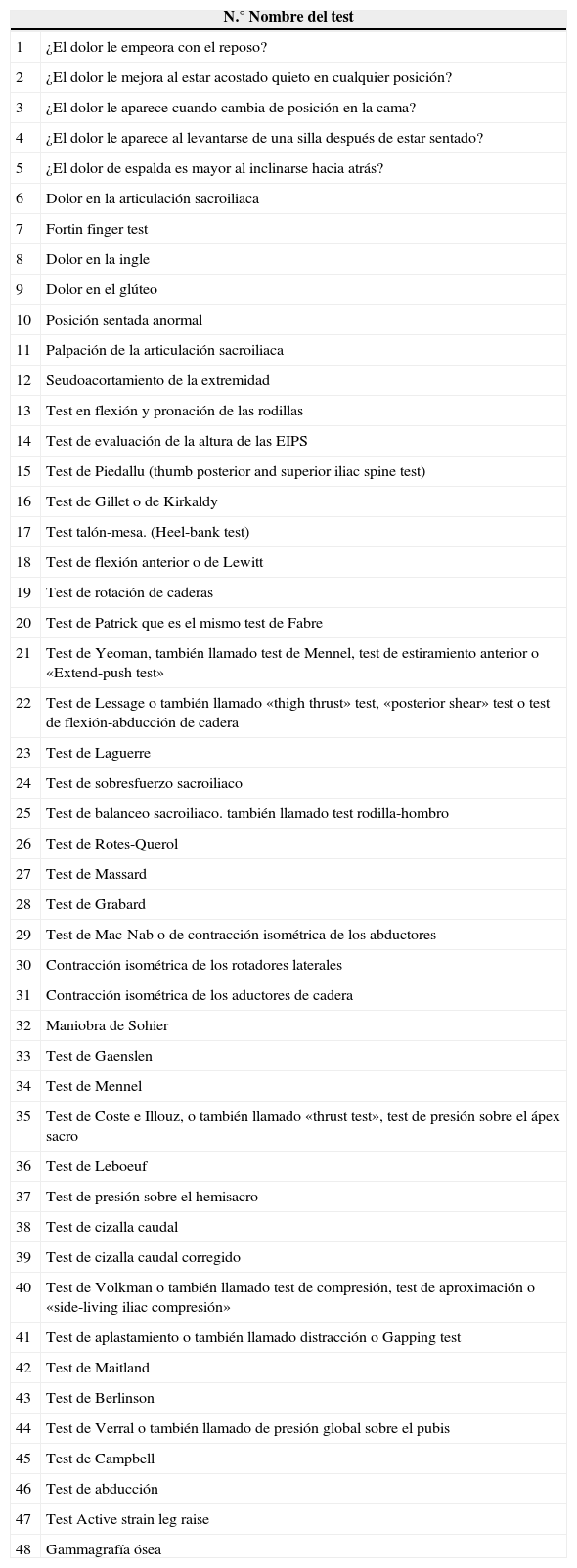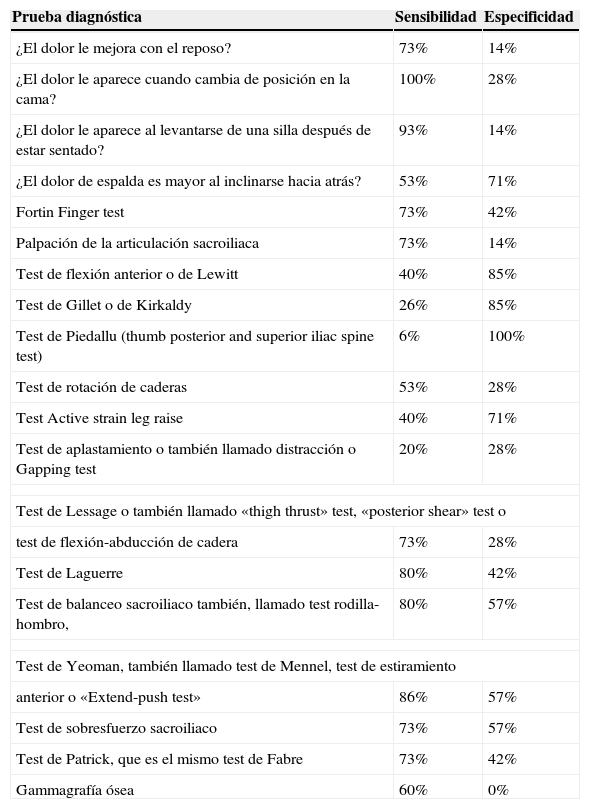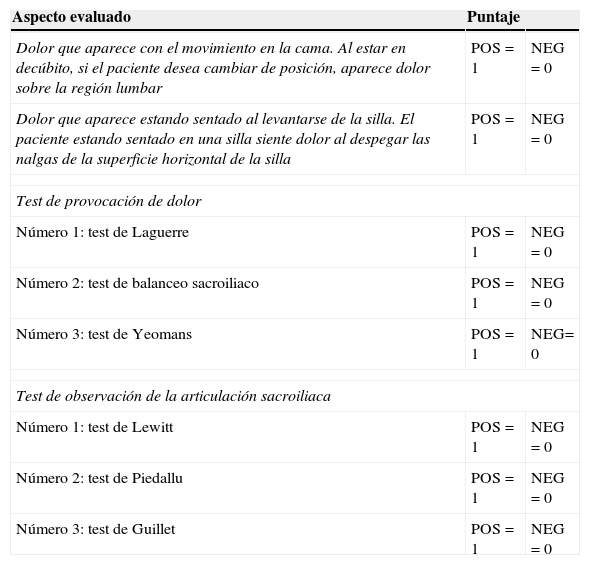La disfunción biomecánica de la articulación sacroiliaca (ASI) es una de las etiologías que debe considerarse en el estudio del dolor lumbar. El presente estudio busca proponer una escala de diagnóstico clínico para el síndrome de disfunción de la ASI (SI5).
Materiales y métodosSe desarrolló una búsqueda bibliográfica de los signos clínicos y paraclínicos comúnmente utilizados para diagnosticar el síndrome de disfunción de la ASI. Se conformó un grupo de expertos que evaluaron y definieron la escala con los signos clínicos que consideraron más representativos para realizar el diagnóstico. Se aplicó la escala a 22 pacientes y posteriormente se aplicó la prueba diagnóstica estándar de esta patología (bloqueo selectivo de la ASI). Se evaluaron la sensibilidad y la especificidad de cada signo. Con estos datos se estableció una propuesta de escala diagnóstica denominada SI5.
ResultadosLos test clínicos con mayor sensibilidad para el diagnóstico fueron: 2 características clínicas referidas por el paciente, test de Laguerre, test de balanceo sacroiliaco y test de Yeomans (sensibilidad mayor al 80%). Los test con mayor especificidad diagnóstica (≥ 80%) fueron el test de Lewitt, el test de Gillet y el test de Piedallu. La escala diagnóstica de disfunción de la ASI SI5 propuesta tiene una sensibilidad del 73% y una especificidad del 71%.
ConclusionesEl síndrome de disfunción de la ASI es una patología frecuente como causa de dolor lumbar. Nuestros resultados proponen la escala diagnóstica de disfunción de la ASI SI5 que muestra una buena sensibilidad y especificidad diagnóstica. Sin embargo, se requiere continuar el proceso estadístico completo de validación de la escala.
Sacroiliac joint dysfunction is a known cause of low back pain. We think that a diagnostic score scale (SI5) may be performed to assess diagnostic utility of clinical signs of sacroiliac joint dysfunction. The primary aim of the present study was to conduct the pilot study of our new diagnostic score scale, the SI5, for sacroiliac joint syndrome.
Material and methodsWe reviewed the literature on clinical characteristics, diagnostic tests and imaging most commonly used in diagnosing sacroiliac joint dysfunction. Our group evaluated the diagnostic utility of these aspects and we used those considered most representative to develop the SI5 diagnostic scale. The SI5 scale was applied to 22 patients with low back pain; afterwards, the standard test for diagnosing this pathology (selective blockage of the SI joint) was also performed on these patients. The sensitivity and specificity for each sign were also assessed and the diagnostic scale called SI5 was then proposed, based on these data.
ResultsThe most sensitive clinical tests for diagnosing SI joint dysfunction were 2 patient-reported clinical characteristics, the Laguerre Test, sacroiliac rocking test and Yeomans test (greater than 80% sensitivity). The tests with greatest diagnostic specificity (>80%) were the Lewitt test, Piedallu test and Gillet test. The proposed SI5 test score scale showed sensitivity of 73% and specificity of 71%.
ConclusionsSacroiliac joint syndrome has been shown to produce low back pain frequently; however, the diagnostic value of examination tests for sacroiliac joint pain has been questioned by other authors. The pilot study on the SI5 diagnostic score scale showed good sensitivity and specificity. However, the process of statistical validation of the SI5 needs to be continued.
Article

If it is the first time you have accessed you can obtain your credentials by contacting Elsevier Spain in suscripciones@elsevier.com or by calling our Customer Service at902 88 87 40 if you are calling from Spain or at +34 932 418 800 (from 9 to 18h., GMT + 1) if you are calling outside of Spain.
If you already have your login data, please click here .
If you have forgotten your password you can you can recover it by clicking here and selecting the option ¿I have forgotten my password¿.















